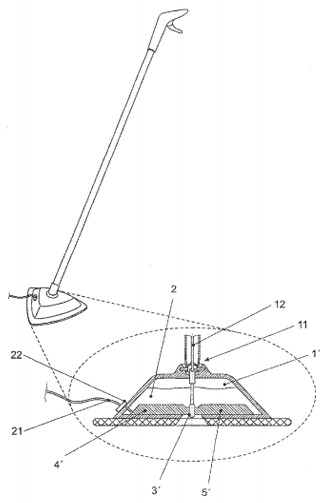 The award-winning Phase Change Matters e-mail newsletter is a weekly summary of the latest news and research on phase change materials and thermal energy storage. To subscribe, visit www.puretemp.com/subscribe. For more frequent updates, follow @puretemp on Twitter or visit the Phase Change Matters blog, www.puretemp.com/pcmatters.
The award-winning Phase Change Matters e-mail newsletter is a weekly summary of the latest news and research on phase change materials and thermal energy storage. To subscribe, visit www.puretemp.com/subscribe. For more frequent updates, follow @puretemp on Twitter or visit the Phase Change Matters blog, www.puretemp.com/pcmatters.
BUILDING | CONSTRUCTION

U of Washington expands use of PCM in science complex walls, ceilings
Phase change material will be used in walls and ceiling panels at the University of Washington‘s new Nanoengineering and Sciences Building. The 78,000-square-foot building is the second phase of a science complex at the center of campus. The first was the 90,000-square-foot Molecular Engineering and Sciences Building, completed in 2012.
Writing in Seattle’s Daily Journal of Commerce, Nicole Cooper of ZGF Architects explains how PCMs performed in phase one:
“The PCM is developed from vegetable oil and is ‘charged’ at night when windows to office spaces are automatically opened to provide a flush of cool air. With the completion of phase one, the design team was able to set up temperature monitoring in the spaces, wall cavities and ceilings to quantify the effects of the PCM.
“It was determined through two years of data collection that the PCM reduces the temperature around 1.5 to 2 degrees during peak times on the hottest days of the year. This provided significant savings in the design of the mechanical systems for both phases as well as a beneficial cost savings to UW.”
MARKET RESEARCH
Global microencapsulation market projected to reach $9.13 billion by 2020
The global microencapsulation market, valued at $4.77 billion in 2013, is expected to reach $9.13 billion by 2020, Transparency Market Research reports. That’s a compound annual growth rate of 9.7 percent.
The report attributes much of the growth to the rapid expansion of the pharmaceuticals industry. Key players profiled in the report include Encapsys, Dow Corning, 3M, Microtek Laboratories, BASF and Bayer AG.
15% annual growth projected for advanced energy storage market
The global advanced energy storage market is expected to reach 11.3 gigawatts by 2022, according to the research firm Radiant Insights. That’s a compound annual growth rate of 15 percent from 2014 to 2022.
Electricity generation was the largest segment in 2014, accounting for more than 33.5 percent of total demand. Thermal energy storage, with a value of more than $1.3 billion, was the leading technology.
AWARDS
Thermal ice storage system wins ASHRAE student design award
A thermal ice storage system designed by a team from the University of Nebraska-Lincoln won first place in the HVAC calculation category of ASHRAE‘s 2015 student design competition.
Competitors were asked to design an efficient HVAC system for a hypothetical three-story classroom and office building with a peak cooling load of 157 tons in Doha, Qatar. The Nebraska team’s ice storage system allowed chiller size to be reduced to 100 tons and still meet load. The students demonstrated that the ice system’s higher initial cost would be offset by the lower cost of the chiller and reduced energy needs during peak demand for cooling.
Team members are Kristin Hanna, Garrett Johnson and Mark Wilder. Their faculty advisor is Dr. David Yuill, an assistant professor at the University of Nebraska and vice chair of ASHRAE’s technical committee on instruments and measurements.
Va-Q-tec is finalist in 3 categories in cold chain competition
Va-Q-teq Ltd. is a finalist in three of four categories in the 2016 Temperature Controlled Logistics Awards. Online voting will determine the winner. Here are the finalists:
Best Temperature Logistics Project: Johnson & Johnson, QED Scientific, va-Q-tec Ltd. Va-Q-tec partnered with Gilead Sciences to produce an improved version of the va-Q-tainer, a passive pallet shipper equipped with phase change material.
Supply Chain Innovation: CargoSense, Locus Trax Worldwide, va-Q-tec Ltd. Va-Q-tec partnered with Air France-KLM-Martinair Cargo to offer rental of va-Q-tec shippers worldwide.
Cold Chain IQ Newcomer: Alan Wu, PointRFID Co. Ltd.; Stefan Braun, SmartCAE; Katharina Wuensche, va-Q-tec Ltd. Wuensche was nominated for building a global network of more than 50 airline partners in less than five years.
Cold Chain IQ Influential Media: The Load Star, Life Science Leader, Freshlogistics Magazine.
Winners will be announced at the Temperature Controlled Logistics Europe trade show in Frankfurt, Germany, Jan. 25-28, 2016.
ENERGY POLICY
Oregon’s new energy storage mandate is ‘technology agnostic’
Utility Dive examines Oregon’s new energy storage mandate, which requires PGE and PacifiCorp to have at least 5 MWh of energy storage in service by Jan. 1, 2020. The Oregon Public Utilities Commission will meet with stakeholders in 2016 to develop guidelines for utilities. Herman K. Trabish writes:
“The law limits the amount of storage a utility can procure or develop at 1% of the company’s peak load, although they can obtain waivers from the OPUC for larger systems if more than one utility shares the program and its cost. In 2014, PGE reported a peak load of 3,866 MW in the state, and PacifiCorp’s was about 2,377 MW, according to a blog post on the law from K&L Gates attorneys.
“Any technology that captures energy, stores and delivers it is considered eligible. That includes batteries, flywheels, compressed air energy storage, thermal storage, and pumped hydro-power, according to a state Senate staff filing. The law is ‘technology-agnostic, but industry realizes the declining price in battery storage,’ it adds.
” ‘Certain types of storage can be cost effective today, and advances in technology are expected to continue this trend,’ said Hillary Barbour, policy director of advocacy group Renewable Northwest. ‘The legislation’s definition of energy storage is broad enough to allow for all types of storage technology.’ “
PATENTS
Cleaning apparatus with a fluid container and phase change material
 U.S. patent application 20150305588 (applicant Karl Freudenberg KG, Germany):
U.S. patent application 20150305588 (applicant Karl Freudenberg KG, Germany):
“A cleaning apparatus for cleaning floors and/or surfaces, having a container for holding a cleaning fluid, a discharge device for discharging the cleaning fluid onto a floor and/or surface to be cleaned, and a heating device for heating and/or tempering and/or evaporating the cleaning fluid. The cleaning apparatus can easily be supplied with energy for heating and/or tempering and/or evaporating the cleaning fluid, and the apparatus can be operated cordlessly. …
“The heat store could comprise phase change materials, or what are known as PCMs [4 and 5 at right]. An example for such material is paraffin. These materials demonstrate a particularly high heat storage capacity. In the event of a phase transition from solid to fluid, these materials demonstrate defined temperature ranges in which heat can be fed, without the temperature of the materials changing. When cooling such material, said material delivers the stored heat to the surrounding environment. This effect can be used in order to feed the stored heat to the cleaning fluid and thus compensate for the cooling thereof to ambient temperature over a certain period of time.”
Microencapsulated PCM in gypsum plate capable of flame retardation
U.S. patent application 20150329783 (National Chung Shan Institute of Science and Technology, Taiwan):
“A method of manufacturing a microencapsulated phase-change material-containing gypsum plate capable of flame retardation and temperature variation attenuation is introduced, such that an organic microencapsulated phase-change material is uniformly distributed in an inorganic gypsum plate. The method involves putting a microencapsulated phase-change material in a dispersing agent solution, blending the dispersing agent solution to form a first solution, putting the foaming agent in the first solution, putting gypsum powder and starch in the first solution, blending the first solution to form a microencapsulated phase-change material gypsum mixture solution, molding the microencapsulated phase-change material gypsum mixture solution to finalize the manufacturing of a microencapsulated phase-change material-containing gypsum plate capable of flame retardation and temperature variation attenuation.”
IN BRIEF
• Pharma giant Almac is partnering with QuickSTAT on a program to improve turnaround times of phase change shippers and other vacuum insulated packaging systems. The program will be based at QuickSTAT’s temperature-controlled facility near Belfast International Airport and 30 minutes from Almac headquarters in Craigavon, U.K.
• T. Stern Sustainability of Seattle is offering an online course titled “LEED Economics: Costs, Benefits & Performance” through GreenCE. Topics include LEED rebates and low-cost LEED strategies. Cost: $19.
• More positive press for the Ice Bear thermal energy storage system, a piece on EcoFriend.org: “Solar powered air conditioning is the new hot thing.”
• Tesla‘s chief technical officer, J.B. Straubel, says the company’s planned Gigafactory in Nevada will produce as much renewable energy as it uses.
RESEARCH ROUNDUP
For our full list of recent academic research, see puretemp.com/academic. Here are highlights from the past week:
From Hemijska Industrija:• Testing of the functional garments with microencapsulated phase change material in simulated high temperature conditions [pdf]
From Journal of Sustainable Design & Applied Research:
• Validating the Performance of a Prototype Phase Change Material for a Thermal Energy Storage Tank, Connected to a Micro-CHP
From doiSerbia:
• Melting / Solidification Characteristics of Paraffin Based Nanocomposite for Thermal Energy Storage Applications [pdf]
From Applied Energy:
• Optimal behavior of responsive residential demand considering hybrid phase change materials
• Application of weather forecast in conjunction with price-based method for PCM solar passive buildings – An experimental study
From Renewable and Sustainable Energy Reviews:
• Types, methods, techniques, and applications for microencapsulated phase change materials (MPCM): A review
• Sensible heat thermal storage energy and exergy performance evaluations
From Solar Energy:
• Heat loss from thermal energy storage ventilated tank foundations
From Energy Conversion and Management:
• A reference device for evaluating the thermal behavior of installed multilayered wall containing a phase change material
NETWORKING
Connect with PCM experts and industry leaders on LinkedIn
More than 440 of your peers have joined a new LinkedIn group devoted to the discussion of phase change material and thermal energy storage. The Phase Change Matters group is an interactive complement to the award-winning blog and newsletter of the same name.
You are invited to join the group and connect with PCM and TES experts from around the world. New members this week include Steve Reigh, mechanical designer at DLR Group, Seattle; Leah Elliott, R&D engineer at ViaCyte, San Diego; Michael Green, vice president R&D at Croda, Yorkshire, U.K.; and Almudena Muñoz Babiano, technology development chief engineer at Gamesa Innovation and Technology, Madrid.
YOUR TURN
Got a question about PCMs or TES? Ask our experts
Two Entropy Solutions advisors, Dr. Mohammed Farid of the University of Auckland and Lucas B. Hyman of Goss Engineering, are ready to answer your questions about phase change material and thermal energy storage. We’ll select the best questions sent to inquiries@puretemp.com and post the answers here each Friday.